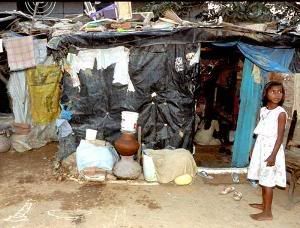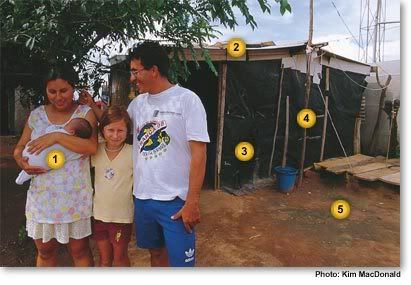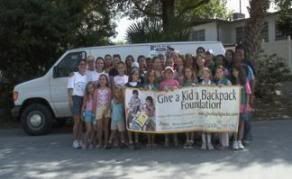Latin America and the Caribbean aren't completely poor because they already possess many of the foundations of economic success such as Natural wealth, highly urban populations, high literacy rates and much more. Yet there are still about 209 million people in those areas live in poverty. About sixty percent of the region's children are living in poverty. It affects 80 million children aged 0 to 12 and 36 million adolescents aged 13 to 19. Only in Latin America, approximately two out of every five people living in extreme poverty are children under 12. Between fifty and twenty percent of the region's children have mothers who have not completed primary school. While in urban areas extreme poverty affects 22.1% of children aged 6 to 12, in rural areas the percentage raises 51.9%. About 27.4 million children in under the age of 14 in Latin America are working. The poverty ruling Latin America cuts the children's chances for a future and they did not choose to be poor. Watch the Video we have composed about poverty and Latin America and the solution:
About sixty percent of the region's children are living in poverty. It affects 80 million children aged 0 to 12 and 36 million adolescents aged 13 to 19. Only in Latin America, approximately two out of every five people living in extreme poverty are children under 12. Between fifty and twenty percent of the region's children have mothers who have not completed primary school. While in urban areas extreme poverty affects 22.1% of children aged 6 to 12, in rural areas the percentage raises 51.9%. About 27.4 million children in under the age of 14 in Latin America are working. The poverty ruling Latin America cuts the children's chances for a future and they did not choose to be poor. Watch the Video we have composed about poverty and Latin America and the solution:
Poverty in Latin America goes back to colonialism where a minority formed upper-class owning large amounts of land and the majority did not have anything. Nowadays this gap between the minority and majority still exists. As the author Jorge Roulade puts it, there is a minority that earns and owns all, and a majority that earns nothing and owns only their human labor and lives.
This situation is currently going on in many of our countries, where we see major differences from one part of the town to another. It is as if one has changed cities in a matter of seconds. On one side, there are fancy houses that hold luxury cars and wealthy families. While on the other, just a glance away from the balcony, one is able to see the poverty in which many live.
The distribution of income is also one of the main reasons for poverty because there is a concentration of it. There is a low percentage of the population that earns more than half of the income, while the majority has to live with what is left. This has had repercussions in education because families have others priorities rather than the education of their kids. They are usually families where there is one, at the most two breadwinners and education is way out of their budget.
Here we have a direct example going through such troubles. Valderene de Souza is a habitat homeowner who was pregnant with her second child and all her husband Ademar could afford for housing in Brazil was a shack make from scraps of wood, cardboard and plastic as you see here...
Private education is mostly out of reach for those who work for a living. Paying tuition and other things such as uniforms and school materials is very hard to include among the family’s monthly budget. Education is not being supported, therefore most poor children are only completing primary education. The parents do not send their children to secondary school because of the direct costs and also because of the opportunity costs this involves. The children are no longer available to contribute to the family income.
Although children in Latin America have the opportunity to assist school they cannot always go because of the requirements such as paid registration, supply of their own uniform, and school supplies. If they cannot meet these requirements they are not allowed to attend. Many of these children cannot afford the registration and never receive an education. We may not be able to eliminate poverty but we can help with the Give a Kid a Backpack Foundation .
 About sixty percent of the region's children are living in poverty. It affects 80 million children aged 0 to 12 and 36 million adolescents aged 13 to 19. Only in Latin America, approximately two out of every five people living in extreme poverty are children under 12. Between fifty and twenty percent of the region's children have mothers who have not completed primary school. While in urban areas extreme poverty affects 22.1% of children aged 6 to 12, in rural areas the percentage raises 51.9%. About 27.4 million children in under the age of 14 in Latin America are working. The poverty ruling Latin America cuts the children's chances for a future and they did not choose to be poor. Watch the Video we have composed about poverty and Latin America and the solution:
About sixty percent of the region's children are living in poverty. It affects 80 million children aged 0 to 12 and 36 million adolescents aged 13 to 19. Only in Latin America, approximately two out of every five people living in extreme poverty are children under 12. Between fifty and twenty percent of the region's children have mothers who have not completed primary school. While in urban areas extreme poverty affects 22.1% of children aged 6 to 12, in rural areas the percentage raises 51.9%. About 27.4 million children in under the age of 14 in Latin America are working. The poverty ruling Latin America cuts the children's chances for a future and they did not choose to be poor. Watch the Video we have composed about poverty and Latin America and the solution:Poverty in Latin America goes back to colonialism where a minority formed upper-class owning large amounts of land and the majority did not have anything. Nowadays this gap between the minority and majority still exists. As the author Jorge Roulade puts it, there is a minority that earns and owns all, and a majority that earns nothing and owns only their human labor and lives.
This situation is currently going on in many of our countries, where we see major differences from one part of the town to another. It is as if one has changed cities in a matter of seconds. On one side, there are fancy houses that hold luxury cars and wealthy families. While on the other, just a glance away from the balcony, one is able to see the poverty in which many live.
The distribution of income is also one of the main reasons for poverty because there is a concentration of it. There is a low percentage of the population that earns more than half of the income, while the majority has to live with what is left. This has had repercussions in education because families have others priorities rather than the education of their kids. They are usually families where there is one, at the most two breadwinners and education is way out of their budget.
Here we have a direct example going through such troubles. Valderene de Souza is a habitat homeowner who was pregnant with her second child and all her husband Ademar could afford for housing in Brazil was a shack make from scraps of wood, cardboard and plastic as you see here...

Private education is mostly out of reach for those who work for a living. Paying tuition and other things such as uniforms and school materials is very hard to include among the family’s monthly budget. Education is not being supported, therefore most poor children are only completing primary education. The parents do not send their children to secondary school because of the direct costs and also because of the opportunity costs this involves. The children are no longer available to contribute to the family income.
Although children in Latin America have the opportunity to assist school they cannot always go because of the requirements such as paid registration, supply of their own uniform, and school supplies. If they cannot meet these requirements they are not allowed to attend. Many of these children cannot afford the registration and never receive an education. We may not be able to eliminate poverty but we can help with the Give a Kid a Backpack Foundation .


1 comment:
Poverty affects lot of people, like here in my country many citizens were living in poverty no homes, no jobs.
But how can we fight poverty.? When It's like a disease that spreading so fast. Almost the whole world were affected with it.
from: backpack
Post a Comment